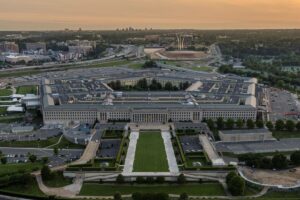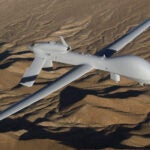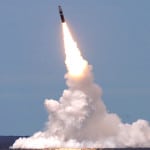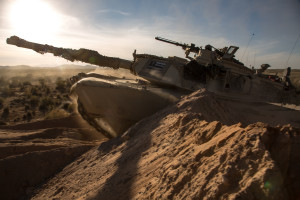
By Dean Bubley, Defense Opinion Writer.
The U.S. Department of Defense (DoD) currently uses the 3.1-3.45 GHz spectrum band for radar and missile defense systems. However, the government is discussing future uses for this band, either for new forms of spectrum sharing or as a target for clearance and auction for commercial mobile use.
The highly contentious debate hinges on whether the U.S. should clear and auction these bands for full power 5G expansion by major carriers. But several recent developments — including a Jan. 23 congressional hearing on spectrum policy and President Trump’s executive order calling for an “Iron Dome” missile defense shield for the U.S., (otherwise known as a Golden Dome) — should lead policymakers to rethink the wisdom or feasibility of clearing a “pipeline” from this critical band for 5G expansion.
Spectrum sharing is possible
A 2023 DoD feasibility assessment concluded that simple clearance and auction of the lower 3GHz would be hugely expensive, time-consuming and potentially risky for national security.
But subsequent work under the government’s National Spectrum Strategy (NSS) implementation plan has assessed ways to share the spectrum between DoD and commercial users, such as a proposed new “highly dynamic” spectrum sharing model.
Highly dynamic sharing refers to real-time spectrum sensing and allocation, accommodating commercial users alongside highly mobile military assets like airborne radars or vehicular systems such as air-defense units. This may require changing permissions and priorities in seconds or even sub-second intervals. While there is huge potential here, the engineering challenges should not be underestimated — it is significantly more complex than some existing military / commercial spectrum sharing approaches.
A recent Wireless Innovation Forum webinar highlighted another important consideration about the lower 3GHz band. It is home to dozens of different radar and other systems, each needing suitable sharing approaches. The forum is a cross-disciplinary group, including both commercial and government participants, which looks at advanced ways to use spectrum more effectively and efficiently.
The Department of Defense uses a broad array of radar systems, especially for missile detection. The government has made no viable plan for changing all the current DoD systems, even without the new emphasis on extending missile defense to protect the nation. This is why National Telecommunications and Information Administration (NTIA), the government agency responsible for federal spectrum use, has identified spectrum sharing as critical, versus clearance or other options.
Warfighting needs must be a spectrum priority
The Trump administration’s ideas for an integrated missile defense system to fully protect the nation are still at an early stage. While the executive order cites the familiar term “Iron Dome,” in Israel this specific system is part of a multi-layered and integrated defense architecture. Together, these defense systems address various threats, including short-range rockets to ballistic missiles that travel outside the atmosphere, on high, looping trajectories.
The U.S. announcement has a strong focus on intercontinental threats such as new hypersonic missiles and glide vehicles, as well as the role of space-based detection and countermeasures. There is also a separate threat from localized short-range attacks against sites such as airports and ports.
Existing U.S. radar and counter-missile systems are typically confined to specific areas such as major military sites. It is not yet clear which will be retained, which will be enhanced or which new systems may require development and deployment. Some may be at fixed locations, while others may be mobile assets, ground-based, airborne or in space.
Hence, it is unclear which radio frequencies will be required for missile detection or for command and control. A range of bands will be needed – perhaps with usage patterns significantly greater than today.
In his confirmation hearing on Jan. 14 , Secretary of Defense Pete Hegseth noted he was prepared to defend radio frequency spectrum used for “how our war fighters communicate across all services.”
Dynamic sharing, but only where possible
The new missile defense intentions argue for avoiding hasty decisions on clearing existing federal bands currently used for radar. Military and homeland security application use of wireless is going to change significantly in the next few years, and so maintaining optionality is wise. The lower 3GHz band and also 7-8GHz are relevant spectrum bands in this context.
While commercial 5G services are also evolving, it’s unlikely that adding incremental capacity will change U.S. economic strength and national security to the same order of magnitude as concrete military innovations to counter enemy’ missiles. Existing radars and other systems may also take new roles or new locations that make near-term reallocation harder still.
The immediate focus should be on dynamic sharing and coexistence between federal users and other tenants where possible. Even without the new Iron Dome initiative, the lower 3GHz band should be maintained for DoD use, with appropriate sharing if it can be made sufficiently dynamic. Adding in additional missile defense requirements makes any rush to reallocate some or all of the band foolhardy.
The final decision process will have multiple stages, but some are pushing to rush through spectrum auctions as part of the budget reconciliation bill that GOP leaders hope to pass by the end of May. Given the strategic importance – and the possible clash between different policy goals – it is critical that this issue is properly and rapidly addressed.
Dean Bubley is the founder of Disruptive Analysis.

Are you a Defense Daily reader with a thought-provoking opinion on a defense issue? We want to hear from you.
- We welcome submissions of opinion articles on national security, defense spending, weapons systems and related areas.
- We welcome submissions from lawmakers, administration officials, industry representatives, military officials, academics, think tank experts, congressional candidates, international experts and others on issues important to the national defense community.
- We welcome a diverse range of opinions all along the political spectrum.
- Email: editor@DefenseOpinion.com













